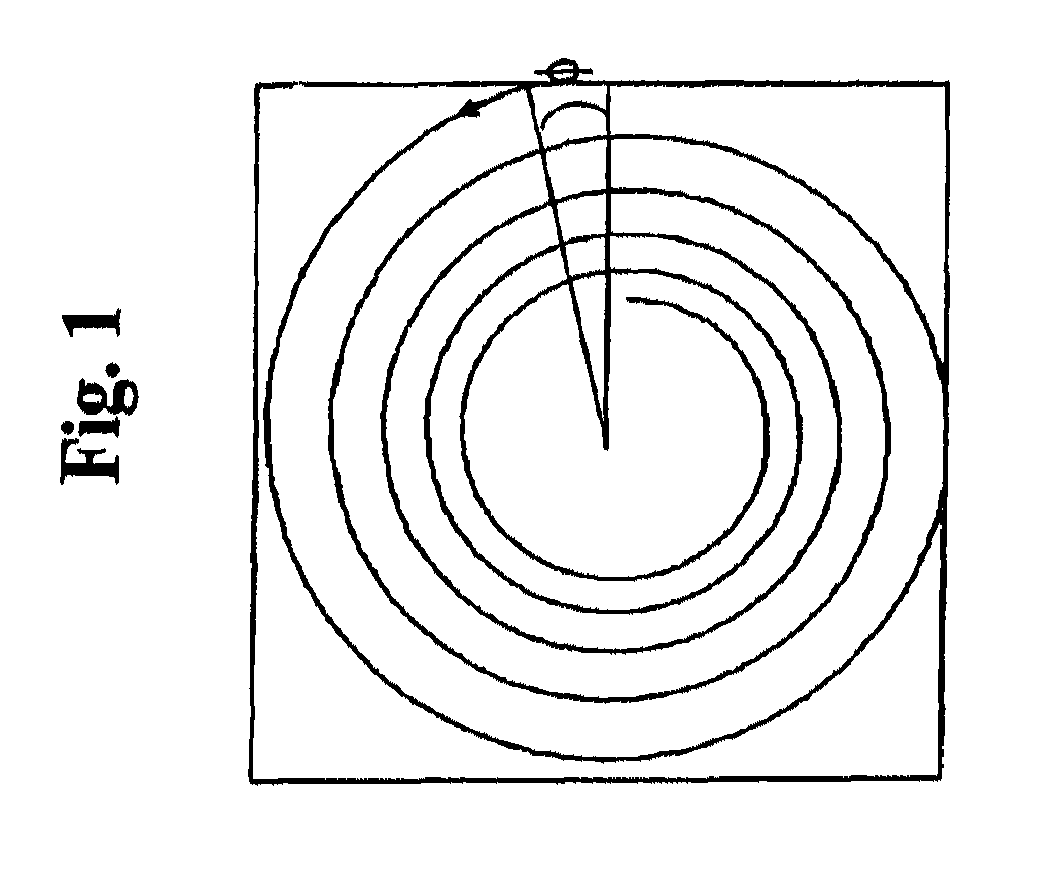Estimation of ion cyclotron resonance parameters in fourier transform mass spectrometry
a technology of cyclotron resonance and mass spectrometry, which is applied in the field of estimation of ion cyclotron resonance parameters in fourier transform mass spectrometry, can solve the problems of limited sensitivity, inability to observe low-abundance species, and inability to directly measure the m/z value of ions in ftms signal, etc., to achieve high correspondence, accurate identification and quantification, and high accuracy
- Summary
- Abstract
- Description
- Claims
- Application Information
AI Technical Summary
Benefits of technology
Problems solved by technology
Method used
Image
Examples
example 1
[0058]In one experiment, ion packets from thirteen peaks, comprising various charge states (i.e., z=1, 2, 3) of a mixture of five peptides of known mass are detected using a Thermo-Fisher LTQ-FT™. The parameters for each ion packet are estimated, the estimated frequencies converted to m / z values by least-squares calibration, and the m / z values compared to known theoretical values. An accuracy of 0.42 parts-per-million (ppm) root-mean-squared deviation (rmsd) is achieved. The sane data is analyzed by Thermo's XCalibur™ program. Thermo Scientific is an entity that sells the XCalibur™ software. XCalibur™ software is a MSWindows®-based system that provides instrument control and data analysis for Thermo Scientific brand mass spectrometers and related instruments. Frequency estimates are inferred by applying XCalibur's™ m / z values for the same 13 ion packets and the calibration parameters it uses to calculate these m / z values. The frequency estimates generated by XCalibur™ are reconverte...
example 2
[0059]In one embodiment, the invention relates to a computational pipeline for high-throughput identification of human tryptic peptides from FTMS data. The steps in the pipeline are 1) fast Fourier transform (FFT), 2) detection of ion packet signals, 3) estimation of ion packet parameters (this invention), 4) mass calibration, 5) identification of elemental composition (or exact mass), 6) peptide sequence identification, and 7) protein identification.
[0060]Calculation of the FFT is a standard procedure and fast algorithms are widely available. Detection is a key step in processing. The same signal model used for estimation can also serve as a detection filter, providing the ability to discriminate ion packet signals from noisy fluctuations. A good detection filter provides the ability to detect low magnitude signals (i.e., low abundance species) without introducing (many) false positive detections. Most false positives can be confidently removed in subsequent stages at the expense o...
example 3
[0072]FTMS is an exquisitely accurate technique for measuring mass, with accuracies at or below one part per million (ppm). FTMS is based upon inducing cyclotron motion of packets of identical ions by a centripetal force field and observing the transient voltage between two conducting detector plates produced as the ion orbits. The mass accuracy achieved by FTMS is limited by the accuracy of the estimates of the parameters of ion cyclotron motion such as initial magnitude, frequency, initial phase, and decay constant, as well as subsequent mass calibration. The latter process describes the conversion of an observed frequency into a mass-to-charge ratio (m / z) and is described elsewhere. In the instant example, the former process is focused upon; namely, constructing an optimal estimate of cyclotron parameters from the Fourier transform of finite, noisy observations of the voltage signal. Each ion packet signal is characterized by its parameters including, but not limited to, initial ...
PUM
 Login to View More
Login to View More Abstract
Description
Claims
Application Information
 Login to View More
Login to View More - R&D
- Intellectual Property
- Life Sciences
- Materials
- Tech Scout
- Unparalleled Data Quality
- Higher Quality Content
- 60% Fewer Hallucinations
Browse by: Latest US Patents, China's latest patents, Technical Efficacy Thesaurus, Application Domain, Technology Topic, Popular Technical Reports.
© 2025 PatSnap. All rights reserved.Legal|Privacy policy|Modern Slavery Act Transparency Statement|Sitemap|About US| Contact US: help@patsnap.com



